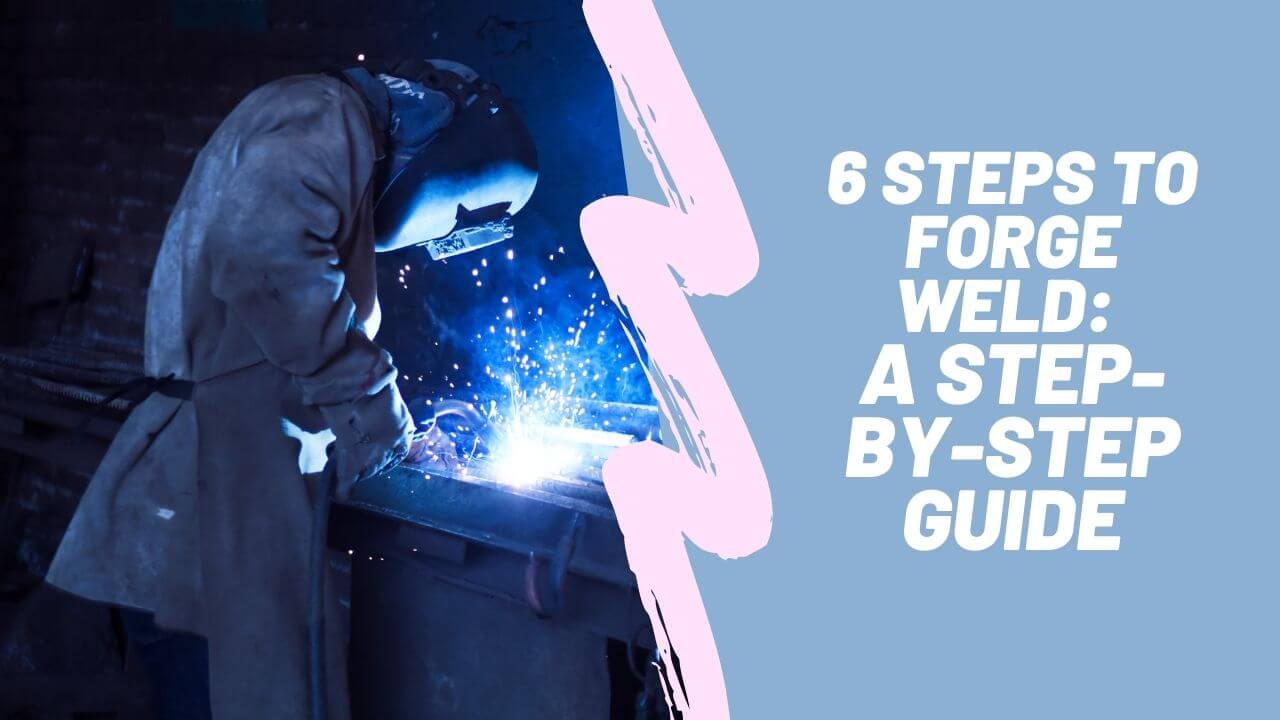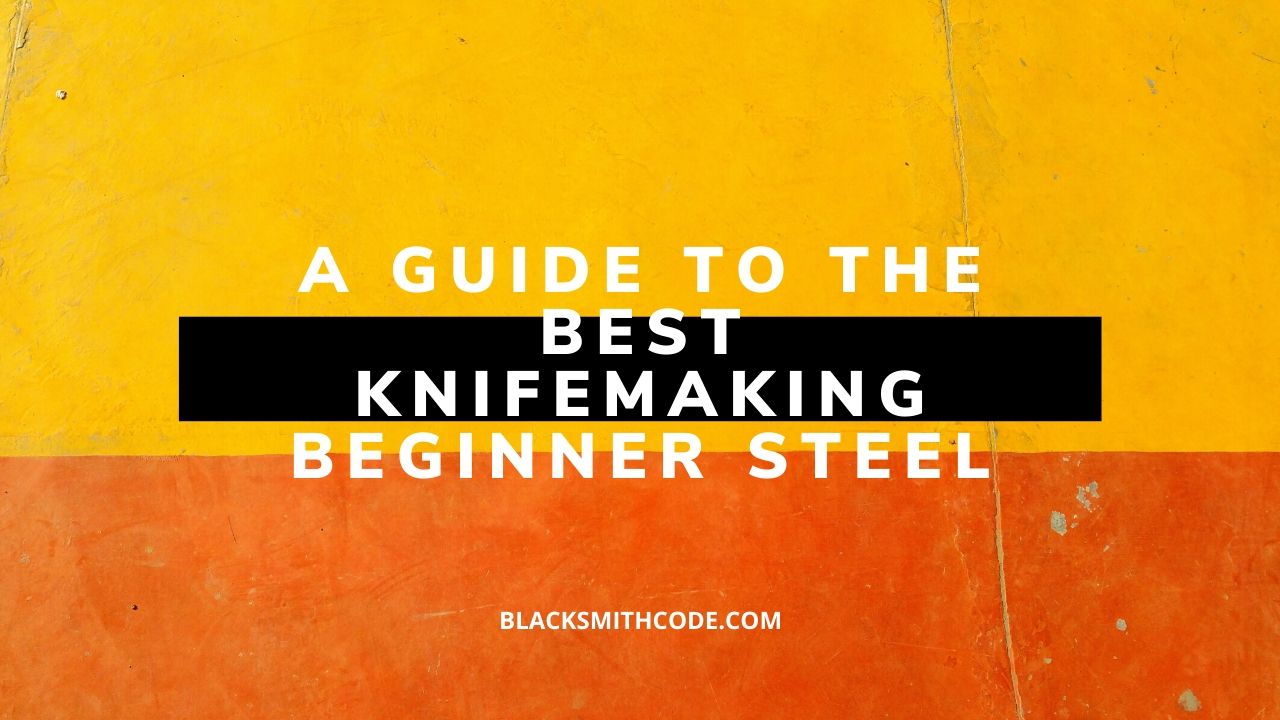Do you know forge welding is one of the essential basics of blacksmithing? Now you know! It is one of those processes and techniques you need to learn if you want to hit the ground running as a potential or professional blacksmith.
Blacksmiths need to familiarize themselves with several processes and techniques. Other than the fact that these techniques are important in many blacksmithing processes, they are also crucial in minimizing the wastage of resources.
Learning how to forge weld steel and other materials will certainly boost your value as a blacksmith!
Forge welding (FOW) can be a tricky skill to learn, but it is an essential blacksmithing technique and once learnt, it becomes invaluable. Forge welding is not very challenging to learn; neither is the execution complicated.
The concept of welding is as old as the blacksmithing trade itself. Welding is essential in joining small pieces of metal together to form a larger piece. Therefore, blacksmiths have to create a way of joining the individual piece of metal to create a bigger or longer one.
It only requires excellent eye-hand coordination, as well as speed, meticulousness and loads of practice. Likewise, it requires you to understand the welding temperature of the material you are using. Also, the mode of welding will be dependent on the size and iron you are trying to create.
Blacksmiths are encouraged to practice forge welding in their leisure time, much like exercising and then, when you have a significant job, the constant practice will pay off. The continuous practice will increase your expertise, speed, and neatness of your work.
Quick Wrap Up
In summary, FOW is a welding process used to join two pieces of metal together. This process is done by heating metals to a high temperature and then, hammering them together. It also makes easy to forge welded steel.
The forge welding process is an original method of joining metals as it allows the joining of both similar and different metals. It is much easier to learn how to forge weld on a one-on-one basis, but with good practice, this article can help you become very skilled at it. Just follow the forge welding tips carefully.
Instructions on forge welding
Step 1: Prepare the Materials
It is essential to identify the materials needed to complete the task. Getting and preparing all the materials before starting the process will make it easier and it will improve your work quality.
Step 2: Fluxing
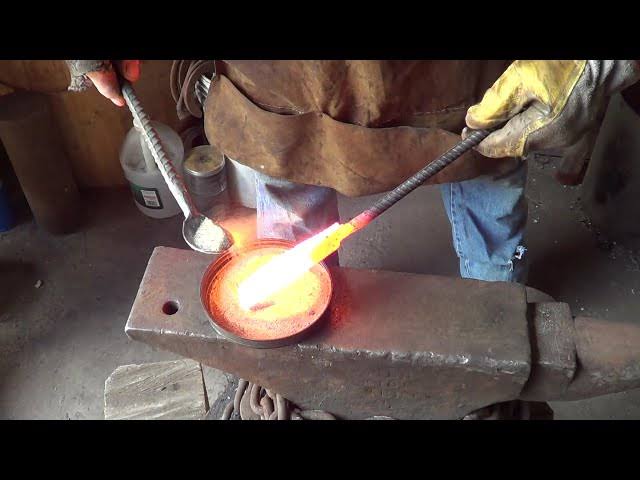
This step involves sprinkling the metals with a flux (like a 20 Mule Team Borax). Forge welding contaminated or dirty surfaces will result in weak and poor joints. It will also increase the melting temperature of the metal.
Consequently, the effect of the forge welding flux is to serve as a low-temperature shield glass that prevents oxidation from occurring on the steel surface which can result in scales formation. Scales will prevent your metal from welding.
It is advisable to use a flux because you need to have the right amount of skill and experience or an oxygen-free burner to weld without scaling your metals. Follow these steps to apply flux to the surface of your materials
Quick Steps
- Sprinkle flux on the surface of the materials until it is saturated
- Alternatively, you can immerse the heated materials in a container holding the flux and ensure that all the surfaces you intend to work on are covered with the flux.
Step 3: Heating
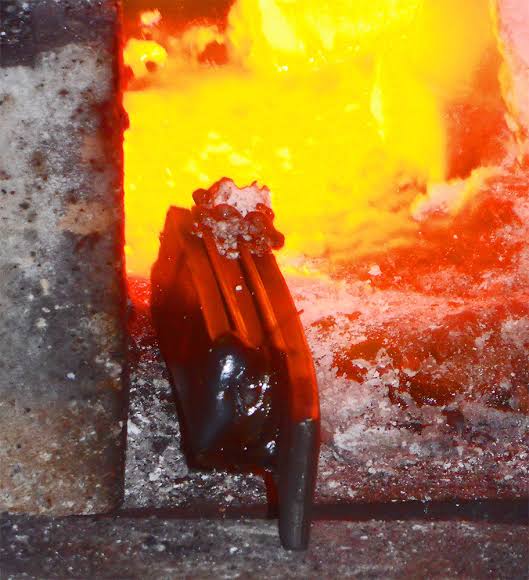
After you have fluxed, place the steel back in the heart of the fire, while avoiding direct air blast as you do not want to oxidize your metal. You can weld the metals in a reducing environment.
The most common reducing atmosphere is within the coal forge. Since the environment is short of oxygen, a layer of iron-oxide is formed on the surface of the metal. This iron-oxide layer is called wustite.
The appropriate forge welding temperature is dependent on the types of materials involved in the process. Different materials have their required temperature, but the presence of impurities can alter it.
Step 4: Watch Out for Color Change
Allow the steel to get to a lemon-yellow color (IMPORTANT: do not look into the fire without using a pair of didymium glasses). It will appear shimmery and almost slippery.
What you want to watch for is a yellow color. Once you get it to that color, you are at the right temperature; if you keep going after this point, your metal can turn into a sparkler. This forge welding temperature is when the carbon in the metal begins to oxidize, which will ruin your metal.
Quick Note:
Once the material reaches an austenitizing temperature, there will be a rapid diffusion of iron through the metal. The rate of carbon diffusion will increase with increasing temperature.
Step 5: Remove the Metals from Forge
After leaving the metals in the forge until you reach a suitable forge welding temperature, the metals should be removed from the heat now as this temperature is just below the spark causing temperature.
Pro Tip
Before decarburization occurs, you must carry out the forge welding process. The rapid execution of this process will prevent abnormal softening of the material; thus, producing the appropriate amount of hardness.
Step 6: Joining and Hammering
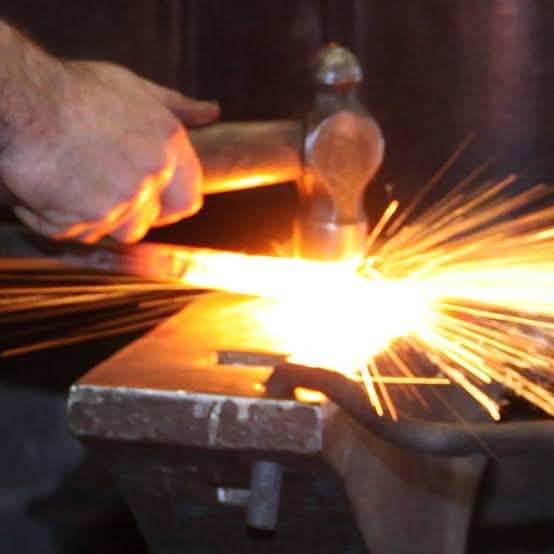
Joining and hammering is the process where you will fuse these metals together. It is essential to be technical about it and add a level of professionalism.
Pro Tip
- Secure your pieces together with a bit of metal wire until the primary weld forms.
- After this step, simply use a power hammer or hydraulic press to hammer from one end to the other.
You have to be careful not to hit the metal too hard; the hammer blows should be firm and reliable but not the same force you would use if you were changing bar shapes. The thickness of your pieces is another factor you should consider. Thicker workpiece will require more power. Also, you need to be careful not to miss any spots.
If you follow these steps as carefully as possible, you should have a pretty solid weld at the end of this process. Well done! In case you haven’t gotten a way to perfect your weld, you might have to go over these steps again.
FAQs
Question
What is forge welding?
Forge welding is one of the fundamental processes in blacksmithing. It involves joining two pieces of metals together by heating them to an extreme temperature before hammering them together. This process is considered solid-state welding, and it is one of the simplest ways to join metals together.
Question
How to forge weld steel?
The process of forge welding steel is not entirely different from other materials. All you need to do is prepare your forge and heat the steel to a suitable temperature. Hammer the steel together at this temperature to join them. However, you might have to use flux if you are forge welding mild steel.
Question
What does flux do in forging?
In summary, flux helps prevent the surface of the welding materials from oxidizing and makes quality forging easier. Oxidation usually results in low-quality welds and undesirable outcomes.
The flux will also extract other impurities from the metal to improve the quality of the weld. It is beneficial for mild steel and other similar materials. The use of flux will help you enhance your forge welding techniques.
Question
What is forging flux?
A forging flux is a material that helps to prevent the surface of welding materials from getting oxidized during the forging process. The earliest type of forging flux suitable for various forging processes is the fine silica sand. An example of simple flux is borax, which sometimes includes powdered iron fillings.
Question
How to forge weld with borax?
Forge welding with borax does not require any particular skill. Once you are ready for the forge welding process, follow the steps below to use borax during the forge welding process.
- Heat the surface of the materials that you intend to forge weld. It is not compulsory to heat it to the forge welding temp yet.
- You can either sprinkle the borax on the surface of the materials or immerse the materials in borax.
- If you are using the sprinkle technique, ensure that you sprinkle enough for the material to be saturated.
- If you are immersing in a borax container, ensure that you immerse it deep enough to cover the entire necessary surface.
- Keep applying the borax until you have a yellow/orange welding temperature.
- Proceed with the rest of the forge welding processes.
Question
Can you forge weld without flux?
Of course, it is very possible to have a good forge weld without flux. However, you must be sure about your technicality, nature of the material, and level of impurities before attempting to forge without flux.
Question
Forge welding a knife?
Forge welding is essential for joining materials. You might not have to forge weld a knife, except you need to join materials during the process. However, some blacksmiths carry out pattern forge on their blades to improve their physical appearance.
Question
How to weld two pieces of metal together?
Welding forging is a process that involves meeting materials before fusing them. There are several ways to weld two pieces of metal together, including forge welding.
They all use the same necessary process. It involves heating the materials to a workable high temperature and fusing them to form a strong joint. The fusing often requires hammering to force the materials into bonding firmly together.
Question
How to join two pieces of metal without welding?
There are alternative joining techniques aside from welding. Some other ways you can join two pieces of metal without welding include soldering, riveting, spot welding, brazing, bolting, hardware assembly, and the use of glue.
Each of these methods has its unique processes and techniques. However, they can provide the same joining power and result in various types of welding.
Question
How to fuse metal without welding?
It is almost impossible to fuse metal without welding. Aside from the methods listed above that are suitable for joining metals, you might not get an alternative to fusing metals.
If you want to combine metals, you will have to heat them to a high temperature and hammer them together. This process is not entirely different from welding forge.
Question
What are the applications of weld forging?
Weld forging is one of the processes that have a lot of application in blacksmithing. It can be the only process needed to make a particular material. Likewise, it might just be a part of the process of creating a more significant project.
The significant applications of weld forging in blacksmithing include:
- It is used to create a more substantial metal from smaller pieces by allowing blacksmiths to join metal and steel.
- It is particularly useful in the welding process of weapons like swords.
- This technique is crucial in creating architectural structures such as gates and prison cells.
- It is useful in the welding barrels of shotguns.
- Forge welding is usually employed in the production of various cookware.
Question
What are the advantages and disadvantages of forge welding?
The forge welding process in blacksmithing has loads of advantages and shortcoming as well. It is, however, necessary for blacksmiths to understand the two faces of forge welding before starting the process.
Advantages of forge welding
- It is relatively straightforward and less complicated.
- It can easily be carried out by most blacksmiths because it doesn’t cost much and requires only small pieces of metal.
- Forge welding is sufficient to join both dissimilar and similar metals.
- The weld joint usually takes most of its properties from the base material.
- Forge welding of metals does not require any filler material to be reliable.
Nevertheless, despite the numerous advantages attached to the use of forge welding in blacksmithing, the process also has its own few shortcomings.
Disadvantages of forge welding
- It is not useful for mass production of materials.
- It is preferable for steel and iron.
- The forge welding process is relatively slow.
- There is a high chance of welding defaults.
- It requires high skill and moderate hammering. The need for high expertise is because excessive hammering can damage the material and joint.
- Forge welding is usually suitable for small materials. Using forge welding for more extensive materials is not economical because it requires a massive press and huge furnaces.
Video
Warnings and Precautions when forge welding
Safety is one of the primary concerns and ethics of blacksmithing. Therefore, it is essential to keep your safety and others’ safety in mind while working in your blacksmithing workshop.
Here are some of the safety precautions and measures you should keep in mind while forge welding materials in your workshop.
- Remember that you are heating the metals to a near melting point; be careful while handling them to avoid burns.
- Do not look into the fire without using a pair of didymium glasses to prevent eye damage.
- Handle all forged materials with tongs, and remember to use your gloves.
- Watch out for your hand and palm during the hammering process.
- Keep other basic blacksmithing safety and precautionary measures in place throughout the process.
